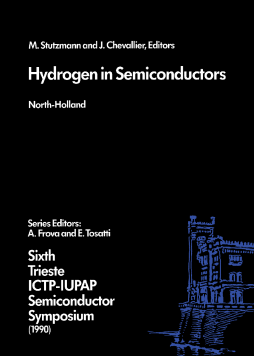
Additional Information
Book Details
Abstract
Hydrogen on semiconductor surfaces has been an area of considerable activity over the last two decades. Structural, thermal, and dynamical properties of hydrogen chemisorbed on crystalline silicon and other semiconductors have been studied in great detail. These properties serve as a reference for related, but more complex systems such as hydrogen at multiple vacancies in crystalline semiconductors or at microvoids in amorphous samples. Interesting from a surface physics point of view is the fact that hydrogen as a monovalent element is an ideal terminator for unsaturated bonds on surfaces and therefore tends to have a large influence on surface reconstruction. A related phenomenon with large technological impact (for example in low cost solar cells) is the passivation of grain boundaries in microcrystalline semiconductors. Finally, hydrogenated semiconductor surfaces always appear as a boundary layer during low-energy hydrogenation of bulk semiconductors, so that a complete description of hydrogen uptake or desorption necessarily has to take these surfaces into account.
This collection of invited and contributed papers has been carefully balanced to deal with amorphous and crystalline semiconductors and surfaces and presents basic and experimental work (basic and applied) as well as theory. The resulting volume presents a summary of the state-of-the-art in the field of hydrogen in semiconductors and will hopefully stimulate future work in this area.
